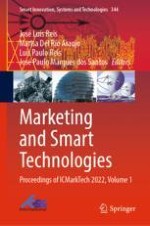2024 | OriginalPaper | Chapter
35. Digital Nomads: Who They Are and What They Want from the Destinations?
Authors : Ana Garcez, Ricardo Correia, Aida Carvalho
Published in: Marketing and Smart Technologies
Publisher: Springer Nature Singapore
Activate our intelligent search to find suitable subject content or patents.
Select sections of text to find matching patents with Artificial Intelligence. powered by
Select sections of text to find additional relevant content using AI-assisted search. powered by
